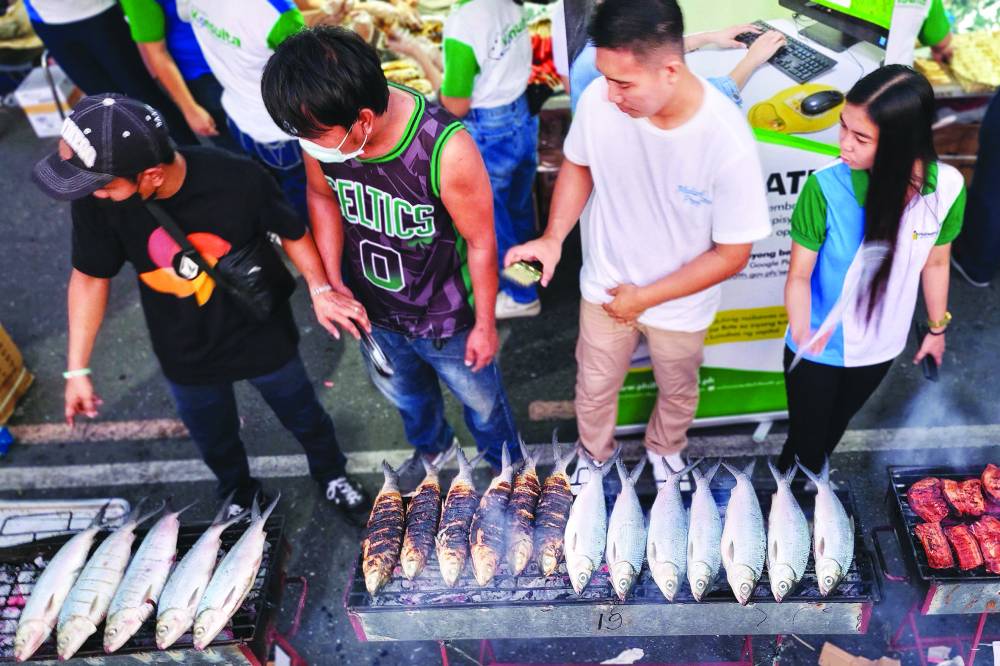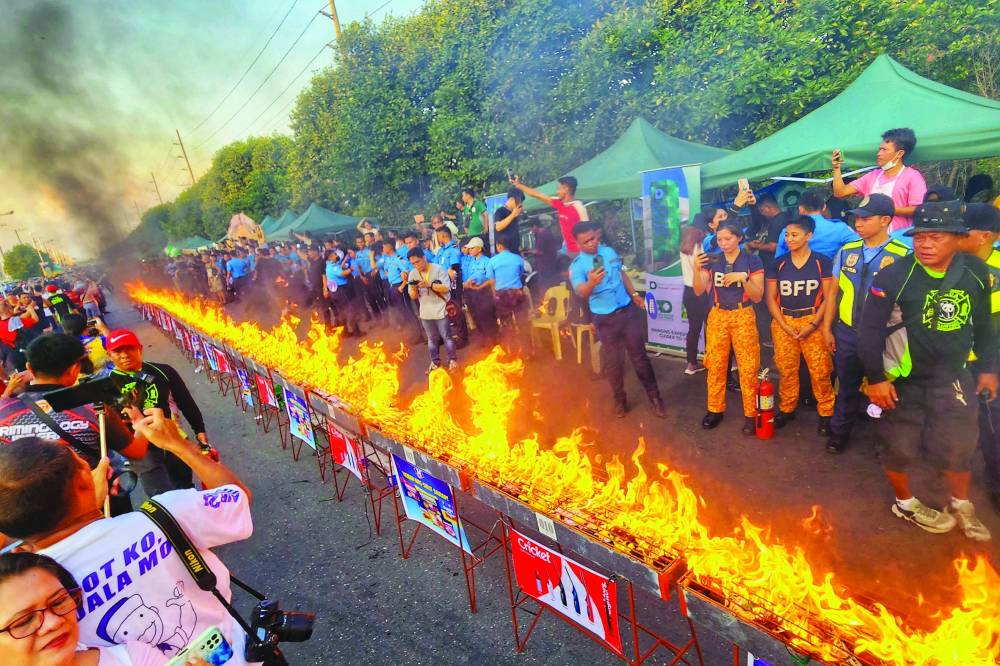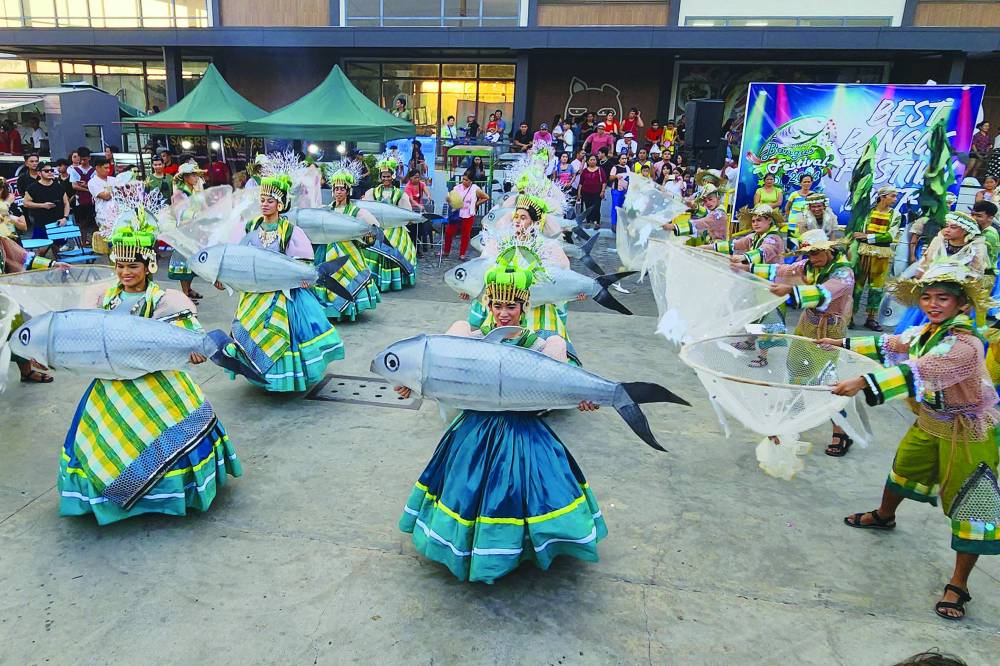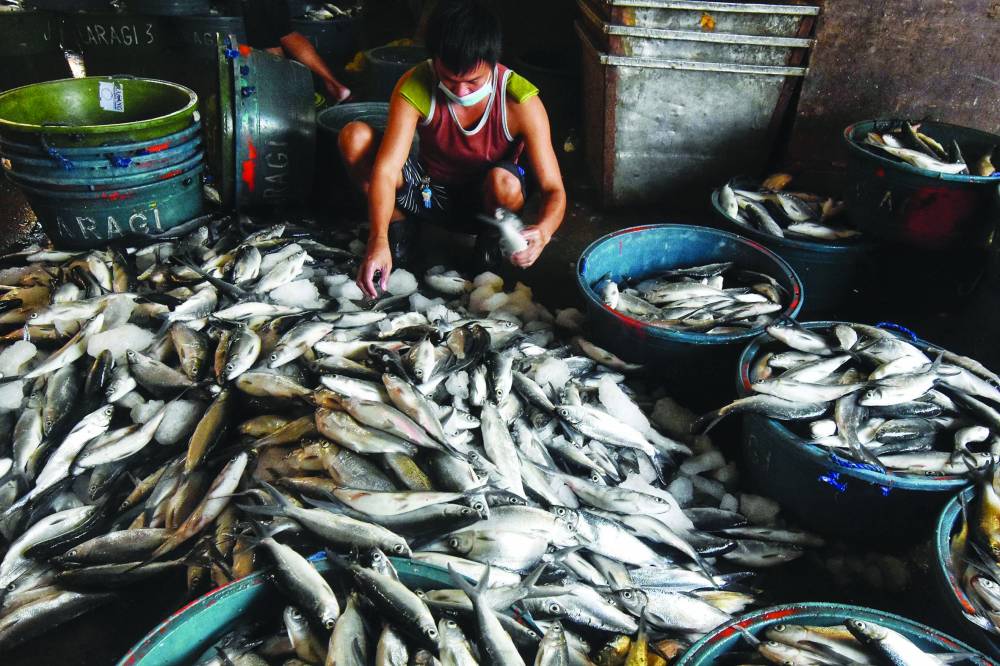‘Bangus’ bargain in Pangasinan: Boon or bane?
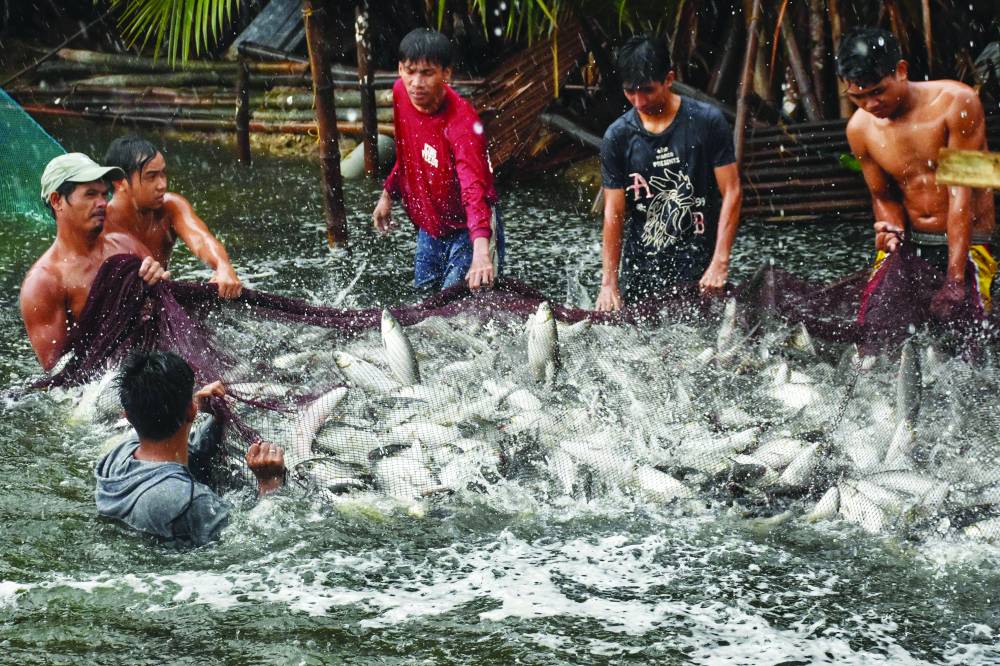
DAGUPAN BOUNTY “Bangus” (milkfish) grown in fishponds in Dagupan City is among the best-tasting varieties sought by consumers. Dagupan, a major economic center of Pangasinan, is also an important trading hub for milkfish. The city has been staging the annual Bangus Festival every April to celebrate the aquaculture industry that has given livelihood to Dagupeños. Among the festival’s activities (photos below) are street parties, street dance competition, Bangus Rodeo and bangus grilling. —Photos by Willie O. Lomibao
DAGUPAN CITY, PANGASINAN, Philippines — Susan Yadao, a grandmother of eight from this city, wasted no time in buying locally grown “bangus” (milkfish) in bulk after finding out that its price at the public market had gone down early this month.
“I was surprised when I saw that bangus were being sold at P125 per kilo at the Magsaysay wholesale market last May 10, so I bought 5 kilos,” Yadao told the Inquirer.
Records from the Bureau of Fisheries and Aquatic Resources (BFAR) showed that from May 4 to May 17, bangus was being retailed from P120 to P200, depending on sizes, in different Pangasinan markets.
During this period, the prevailing prices were P120 to P130 per kilo for small bangus (five pieces per kilo), P120 to P180 for medium (three to four pieces per kilo) and P130 to P200 for large (two pieces per kilo).
Article continues after this advertisementBut prices in Ilocos Norte province were much higher, from P210 to P220 per kilo, as bangus sold there were sourced from Pangasinan aquaculture areas, and the cost of transport and other expenses had been factored in the prices.
Article continues after this advertisementYadao said she was also surprised at the abundance and low prices of saltwater fish at the Dagupan market. “Galunggong” (round scad) were sold for only P120 a kilo, espada (cutlass fish) for P160 and whole tuna for P120 a kilo.
READ: In Dagupan City, fish ‘rodeo’ takes center stage anew at Bangus Festival
Supply, demand
But the low prices may just be a fluke, according to Rosario Segundina Gaerlan, Director of the Bureau of Fisheries and Aquatic Resources (BFAR) in the Ilocos region, adding the high fish production levels were driving prices down for both cultured and wild-caught fish.
“It’s the law of supply and demand,” she noted.
Fish cage operator Alex Soriano said the sea usually yields bountiful fish during the dry season, affecting the prices of cultured fish. Soriano is the president of the Tiera del Norte Realty Corp., a major player in Pangasinan’s aquaculture industry.
He believed that the farm gate prices might drop further to P115 per kilo, poten”tially impacting wholesale and retail market prices.
However, at this rate, producers and fish cage operators were already facing losses since they spent P125 to produce a kilo of bangus.
“Operators cannot dictate the prices of the fish. It is the middlemen who decide, depending on the volume brought to the wholesale markets at the time, or depending on their whims, and thus the prices are fluctuating. Worse, it is the operators who absorb the losses when prices nosedive,” Soriano said.
According to Gaerlan, it is the small-scale fish cage operators who bear the brunt when fish prices plummet, as they face challenges in accessing a market largely dominated by larger operators.
“If small-scale operators attempt to compete with larger ones, they risk losing out, as the market may become saturated with fish from the big-time producers,” she explained.
Gaerlan added: “The problem is that producers are not studying the market and are not mindful of whether they have buyers or none. Production should be based on market demand.”
The oversupply of bangus also happens when operators harvest at the same time, she said, stressing that prices would eventually surge once supply drops.
Soriano noted that small-scale fish growers, particularly those operating 30 or fewer cages, are at risk of losing in the pricing competition, especially as they must harvest when pressured by feed suppliers.
He said major players, meanwhile, could not afford to stop operations to ensure that “365 days a year, the cages are consistently stocked.”
“You cannot choose the season to operate or you won’t have fish to harvest after six or seven months. If local bangus production is stopped, local markets would be flooded with imported fish. Besides, we have regular and contractual workers to support,” he said.
Tiera Norte, which Soriano heads, has 800 workers that consist of caretakers, harvesters, net changers or repairers and others.
So if the prices drop, “kapit lang” (hang tight), hoping the next harvest would bring better prices,” he said. “What will happen to fish consumers if we stop producing?”
Skipping middlemen
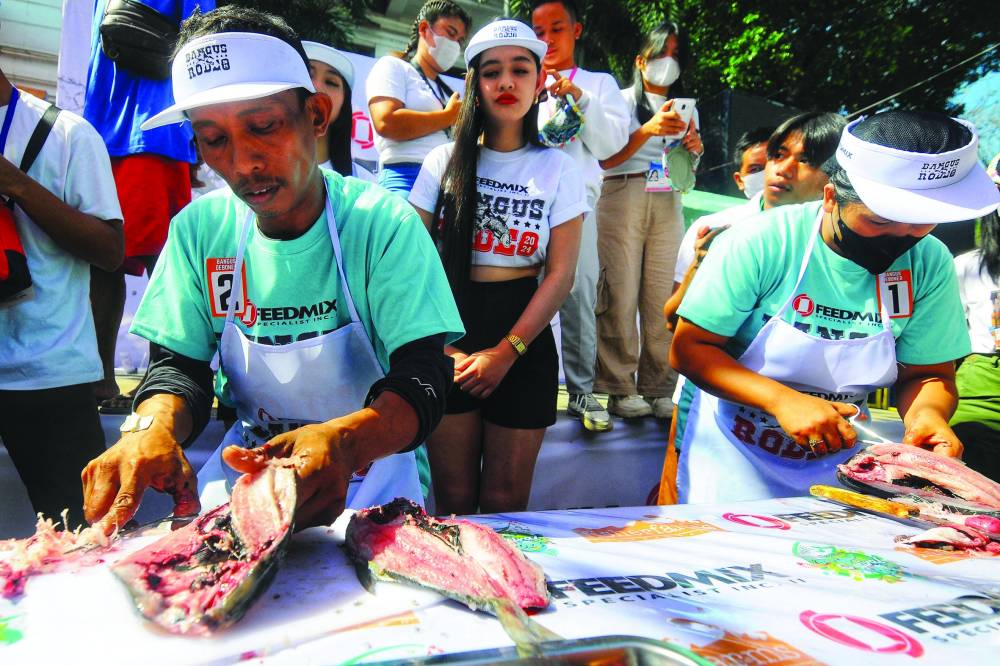
COMPETITION Dagupan residents join the contests for the fastest “bangus” deboner and fastest bangus eater during the Bangus Rodeo in April. The other competitions include the fastest bangus classifiers and the search for the heaviest, longest, and “prettiest” bangus.
Fishery industry players also plan to stabilize prices by bypassing middlemen and joining the Department of Agriculture (DA)-BFAR’s Kadiwa program.
“We started joining the Kadiwa market in Malate, Manila. Through this project, consumers will have access to fresh but low-priced fish, while fish growers will enjoy fixed prices and would not be at the mercy of wholesale markets,” Soriano said.
At the height of the COVID-19 pandemic, the DA-BFAR implemented the Kadiwa project which brought aquaculture products direct from the farms to cooperatives in Metro Manila. The cooperatives paid farm gate prices to fish growers while BFAR handled transport, ice and other costs.

COMPETITION Dagupan residents join the contests for the fastest bangus eater during the Bangus Rodeo in April.
Gaerlan said the project was the DA-BFAR’s way to provide consumers in Metro Manila access to fish during the pandemic. The BFAR also regularly brings “bangus” to landlocked towns.
But funds for bringing “bangus” to Metro Manila had run out so the operation was stopped. The government, however, is hoping that fish growers and cooperatives in the capital region have already established linkage and will continue trading on their own.
The bangus culture industry has spawned another industry—processed and bottled bangus.
The Department of Trade and Industry has registered close to 100 bangus processors. During the International Food Exhibit at the World Trade Center early this month, four of the 10 exhibitors from Pangasinan were engaged in bangus processing and bottling.
These were Elisha Bay Dagupan Bangus and Seafood, Hou Yang Food Corp., Freshious Inc. and Mama Cili Inc., all ready to penetrate the international market.
But still, the biggest market of the aquaculture industry is the fresh produce market, as consumers can prepare the national fish into a variety of dishes—like sinigang, paksiw, fried or grilled—that have become familiar fares on Filipino dining tables.

